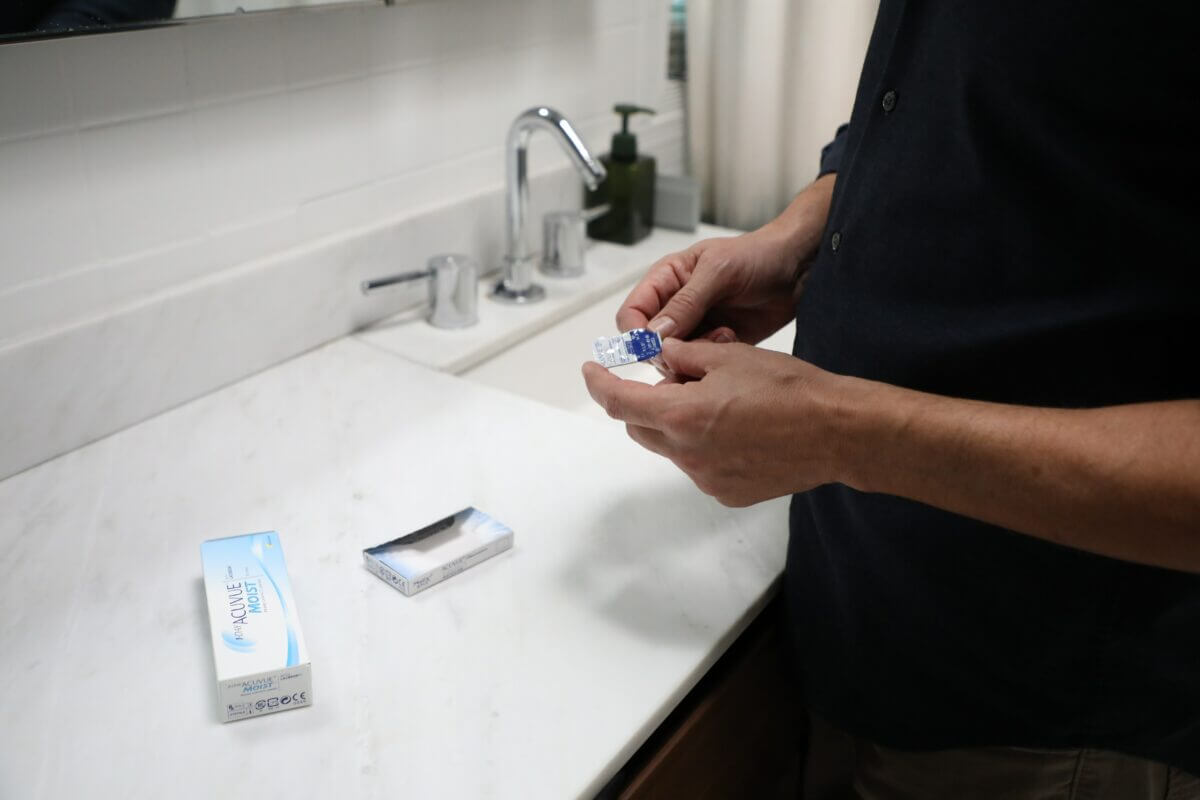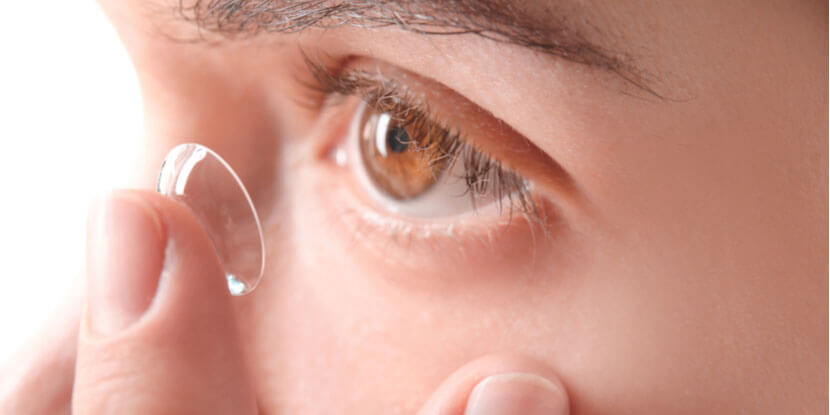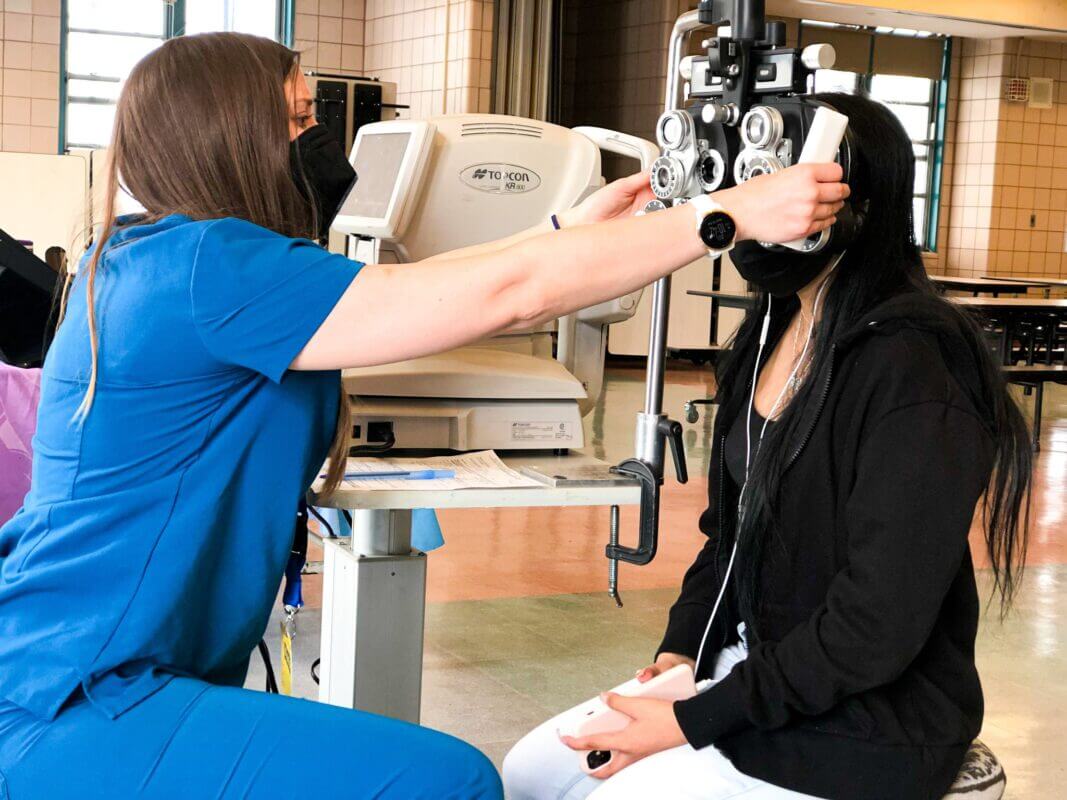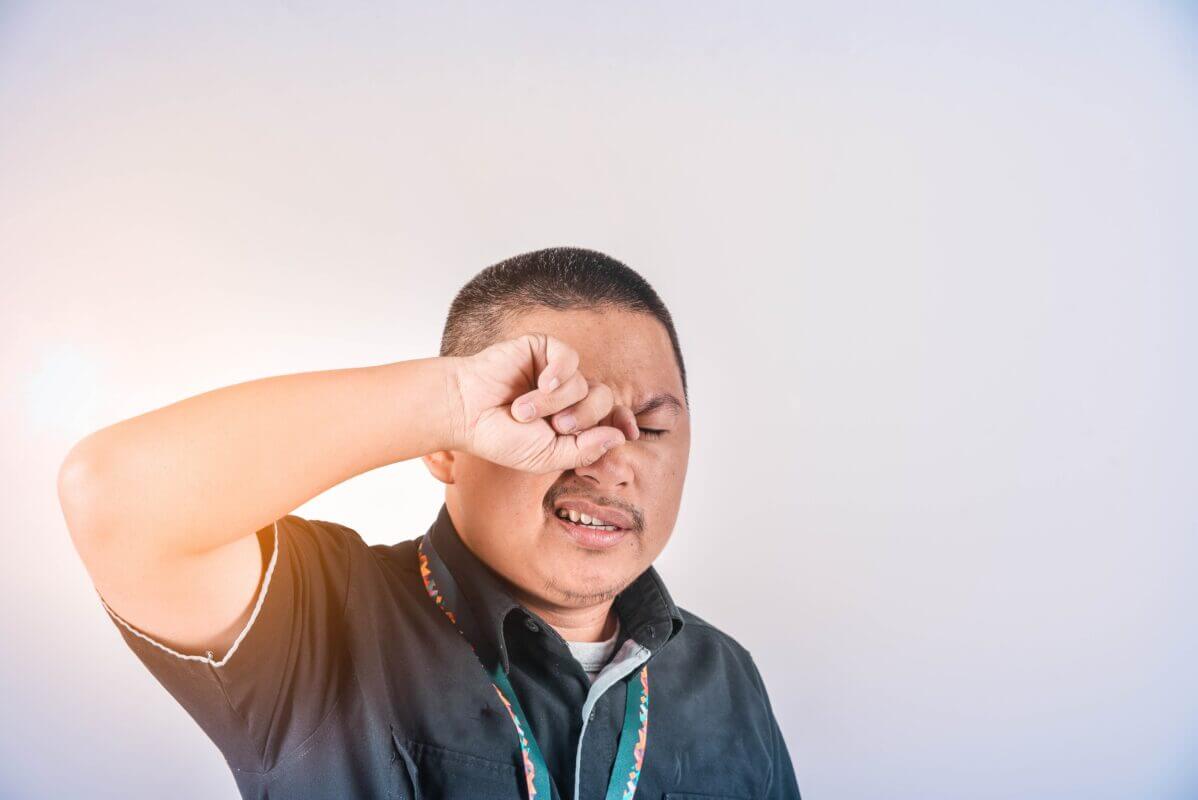There are multiple benefits when it comes to wearing contact lenses. Learning how to use contacts can take a little bit of practice. An estimated amount of 45 million people in the united states wear contact lenses. Contacts are a great way to improve your vision and can help you see better when you’re driving or working on the computer. They can also help prevent eye fatigue and keep your eyes healthy. If you’ve never put in contacts before, don’t worry – it’s a pretty easy process. Here are some tips to help you get started.

How to put in contact lenses
- Start by washing your hands thoroughly with soap and water. This will help to remove any potential contaminants that could transfer to your lenses.
- Next, take out the contact lens from its packaging. Be careful not to touch the lens itself, as this could transfer bacteria to the surface.
- Once the contact lens is out of its packaging, hold it up to your eye. You should be able to see through the lens at this point. If you can’t, try holding it a little closer to your eye or tilting your head back slightly.
- When you’re ready to put the contact lens in, gently place it on your eyeball. You may need to blink a few times to help the lens settle into place.
- Once the contact lens is in, you should be able to see clearly. If you have any trouble seeing, try adjusting the lens until it’s positioned correctly.
- To take the contact lens out, simply grab hold of it with your fingers and pull it away from your eye. Again, be careful not to touch the lens itself.
- Once you’ve taken the contact lens out, place it back in its packaging. Make sure to keep it in a clean, dry place.
If you have any questions about how to put in or take out your contacts, be sure to ask your doctor or optometrist. They can help you get started and ensure that your contacts are fitting properly.
How to take out contacts
Contact lenses are a popular choice for vision correction, but they can be a bit tricky to remove. Here are some tips on how to take out contacts:
- Make sure your hands are clean before removing your contacts. Dirty hands can cause lens contamination and eye infection.
- Look up and down into a bright light to help orient the lens.
- Gently pinch the sides of the lens and pull it out of the eye.
- If the lens is difficult to remove, add a little contact lens solution to your palm and rub it over the lens. This will help loosen the adhesive and make removal easier.
- Always replace your contact lens case every time you change your lenses, to prevent bacteria growth.
- Wash your hands thoroughly after removing your contacts.
Following these tips will help make sure you can remove your contacts safely and easily.
How to take contacts out with long nails
If you have long nails, it can be difficult to take out your contacts. Try using a contact lens removal tool to make the process a little easier. Here are a few tips to make the process easier:
Try the pinching method. This approach uses your fingertips and not your nail. Here is the basic idea:
Push on the opposite sides of the contact lens using the index fingers on either hand. You can angle your nails so that they point away from your eyeball. This requires you to use the sides of your fingers or the tips just beneath the nail. The goal is to press the lens from either side so that it moves forward and comes out easily. Do not use too much pressure. Try a few different configurations of fingertips and various angles. If the pinching method doesn’t work, try using a cotton swab or Q-tip. Gently slide the cotton swab under the lens and lift it off of your eye. If all else fails, seek professional help. Your optometrist or ophthalmologist can safely remove your lenses and clean them for you.

Types of contacts
There are several types of contact lenses that you can choose from, depending on your needs. The most common types of contact lenses are:
- Daily wear lenses: These are the most popular type of contacts and can be worn for up to 12 hours a day. They must be removed at night and cleaned before being worn again.
- Extended wear lenses: These lenses can be worn for up to 30 days straight, but must be removed and cleaned at least once every seven days.
- Disposable lenses: These lenses are meant to be used for one day and then thrown away. They are the most convenient type of lens, but also the most expensive.
- Colored lenses: These lenses are available in a variety of colors and can be used to change your eye color or enhance your natural eye color.
- Orthokeratology lenses: Also known as “ortho-k” lenses, these are specially designed to correct vision problems such as myopia (nearsightedness) or astigmatism. They are worn overnight and then removed in the morning, allowing you to see clearly during the day without having to wear glasses or contact lenses.

Should I wear contacts for an eye exam?
Yes, you should wear contacts for an eye exam. Your doctor will most likely want to see how your contacts look and fit in your eyes. You may also need a new prescription for your contacts. If you wear glasses, your doctor may suggest that you try wearing contacts instead. Contacts can be a great way to improve your vision and keep your eyes healthy. Wearing contacts during an eye exam is the best way to ensure that your doctor gets an accurate picture of your vision and can prescribe the correct lenses or corrective measures.

What to do if the contact lens is uncomfortable
If you are experiencing contact lens discomfort, there are a few things you can do to help make your lenses more comfortable. Your contact lenses might be dry, Try using eye drops. This will help to lubricate your eyes and make the contact lenses feel more comfortable. Another reason for it being uncomfortable is because they are dirty, make sure to clean them properly. Use a contact lens solution to dissolve any built-up deposits on the lenses, and then rinse them off with fresh water.
Contact lenses can be too tight or too loose, visit your eye doctor to have them fitted properly. A poorly fitted contact lens can cause a lot of discomforts, so it is important to have them fitted correctly.
If you are experiencing any other type of contact lens discomfort, contact your eye doctor for help. He or she will be able to recommend the best course of action to take to make your contact lenses more comfortable.
Symptoms of an eye infection
An eye infection can cause a variety of symptoms, including eye discharge, eye pain, blurred vision, and sensitivity to light. If you experience any of these symptoms, it is important to see your doctor right away for diagnosis and treatment. Left untreated, eye infections can lead to serious vision problems.
Eye infections are caused by a variety of different bacteria, viruses, or fungi. They can be spread through contact with infected eye secretions, such as tears or saliva, or through contact with objects that have been contaminated with the infection. Eye infections can also be passed from mother to child during childbirth.
There are many different types of eye infections, and they can affect any part of the eye. The most common type is conjunctivitis, which is an inflammation of the lining of the eye. Other common eye infections include styes, which are red, painful bumps on the eyelid, and keratitis, which is an infection of the cornea.
If you experience any of the symptoms of an eye infection, it is important to see your doctor right away. Early diagnosis and treatment are essential to preventing serious vision problems. Your doctor will be able to determine the cause of your infection and prescribe the appropriate treatment.
